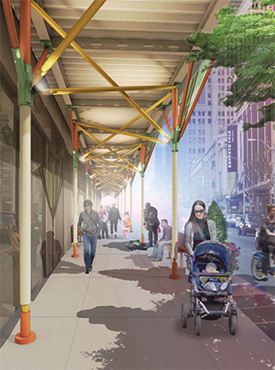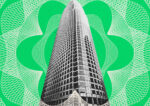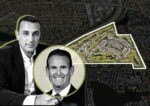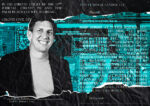Trending
Here’s a look at 4 reimagined sidewalk sheds: VIDEO
NY Building Congress seeking to replace "unsightly" scaffolding across city

If you think sidewalk sheds are becoming more ubiquitous, you’re not wrong.
In the past 12 months alone, a total of 7,446 permits for sidewalk sheds were filed for more than 7,000 buildings across the city. In response, the New York Building Congress launched a competition in June seeking cost-effective designs that could replace unsightly scaffolding.
Last week, the industry group announced four winners, whose designs were a far-cry from the heaps of wood and metal that now hover over more than 200 miles of sidewalk space in New York City.

The “UrbanArbor” design
“The Design Review Committee of fourteen leading industry executives ultimately settled on the four [designs] that best exemplified the goals of the competition of offering practical, cost-effective off-the-shelf designs that are far more attractive than standard sheds,” said Frank Sciame, who heads up an eponymous construction firm and chaired the competition’s committee.
“UrbanArbor” has autumnally-colored beams, which resemble a tree-lined street. Translucent polycarbonate parapets let in more natural light, and solar-powered LED bulbs illuminate the sidewalk at night. The ceiling of the “ScaffoldWing” design is also semitransparent, and angled for effective rainwater drainage.
The “Side+Ways+Shed” positions support beams wrapped in fabric against the building’s walls, granting more room on the sidewalk. The “G-Shed,” too, has LED lighting and, unlike the others, boosts higher shed roofs to allow greater visibility for storefronts. The design shows “modular posts,” replacing complicated bracing systems in favor of a more seamless adaptation.
Whether or not developers are willing to fork out extra cash to use them remains up for debate. A revamped design called “Urban Umbrella” gained some steam back in 2010, but was never adopted by construction companies due to its $150-per-linear-foot price tag.




